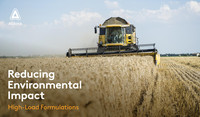
Prized Pineapples

The world has got a taste for pineapples, which is no surprize as for centuries they have been prized for their appearance and flavor. They are mainly grown in tropical regions, although some are planted in greenhouses. Annual global production of pineapples is at 28 million tonnes, almost double that of the year 2000, with the area up 54% in the last 20 years ¹.
Today’s pineapples can trace their roots back to wild species that grew along the Paraná River in what is now Southern Brazil and Panama. They gradually spread throughout South and Central America and were eventually transported to India. Europeans were fascinated by the fruit, which led to rich collectors growing them in heated greenhouses. Costa Rica is now the world’s largest grower of pineapples, accounting for a third of production. It is followed by the Philippines and Brazil.
A pineapple is not actually a single fruit, but a collection of multiple fruits which originate from around 200 flowers, which merge together as they grow. The pineapple plant is a herbaceous perennial which can deliver crops over 10 or more years. A fully-grown pineapple plant is 1.5 metres tall.
To add to its exotic appeal, pineapples are mainly pollinated by bats or hummingbirds ².
Pineapples are key to the financial security of growers in Costa Rica. There, the government has worked with the UN, Dutch development agencies and global fruit processors and supermarkets to improve grower incomes, especially women and environmental protection.
“We want a model of pineapple production where workers are treated fairly, women are able to access leadership positions and are paid the same as their male counterparts, and where production does not contaminate water sources nor harm communities – but rather that the benefits of such production can be enjoyed by as many people as possible,” said Kifah Sasa, the UN Development Program’s Environmental Officer in Costa Rica. Similar programs are being rolled out in Ghana, the Dominican Republic, Ethiopia and Indonesia3.
¹ UN FAO http://www.fao.org/faostat/en/#data/QC
² International Tropical Fruit Network https://www.itfnet.org/v1/2016/05/pineapple-agronomy/
3 UN Development Program https://stories.undp.org/pineapples-on-the-path-to-sustainability



